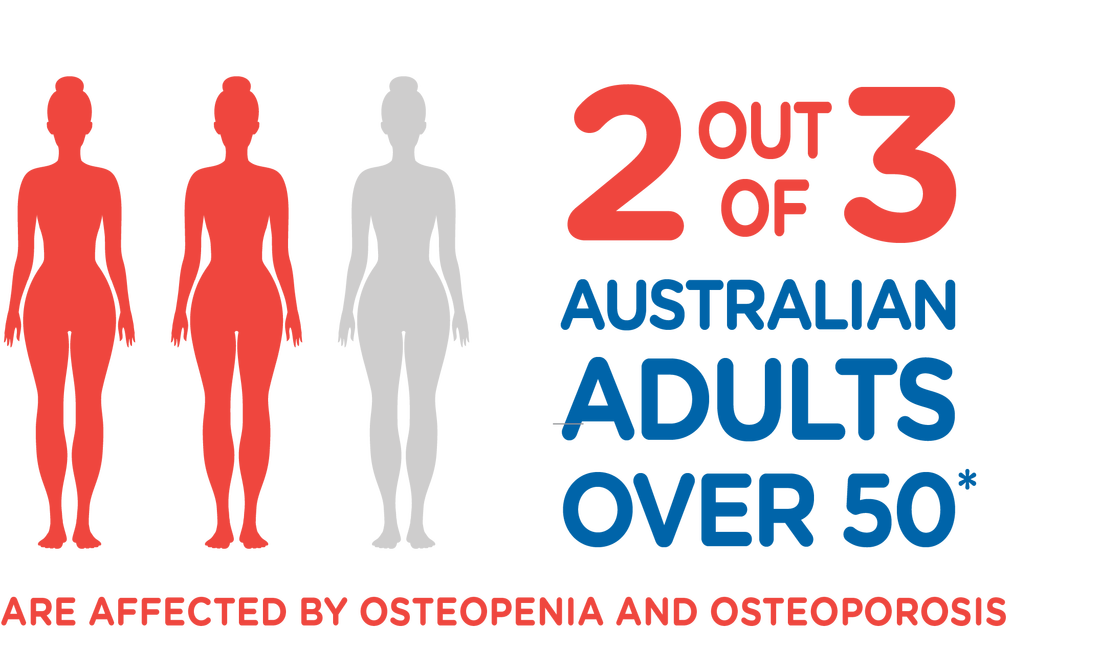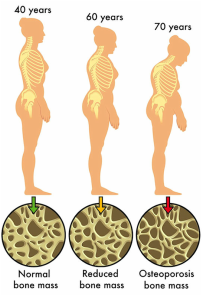 Osteoporosis is a common disease in Australia with 1.2 million people estimated to have osteoporosis and a further 6.3 million with low bone density. This disease makes bones become more brittle leading to a higher risk of breaks than in normal bone and is caused when the bones lose minerals (such as calcium) more quickly than the body can replace them leading to a loss of bone thickness and density. “The Silent Disease” Osteoporosis usually has no symptoms until a fracture occurs, which is why it is often known as “the silent disease.” Osteoporosis can occur in any bone, but is commonly found in the wrist, spine and hip. Fractures in the spine as a result of osteoporosis can result in height loss and changes in posture. Risk Factors for Developing Osteoporosis • Experienced a broken bone after a minor bump or fall • Family history of osteoporosis (hip fracture in a parent) • Height loss of 3cm or more • Medications that affect bone strength - Breast Cancer treated with Aromatase Inhibitors or Tamoxifen - Prostate Cancer treated with Androgen Deprivation Therapy - Corticosteroid use for longer than 3 months (tablets or high-dose puffers) • Early Menopause • Low testosterone levels in men • Coeliac Disease • Hyperthyroidism or Hyperparathyroidism • Chronic kidney or liver disease • Low vitamin D levels Preventing Falls
For people with osteoporosis, preventing falls is vitally important as even a minor fall may cause a bone fracture. Falls are most commonly caused by:
Exercise
Physiotherapists can help with exercises to:
0 Comments
|
AuthorDavid McWilliams graduated from Macquarie University with a Doctor of Physiotherapy. He is a member of Australian Physiotherapy Association, Sports and Exercise Physiotherapy Australia, Sports Medicine Australia Archives
April 2021
Categories |


